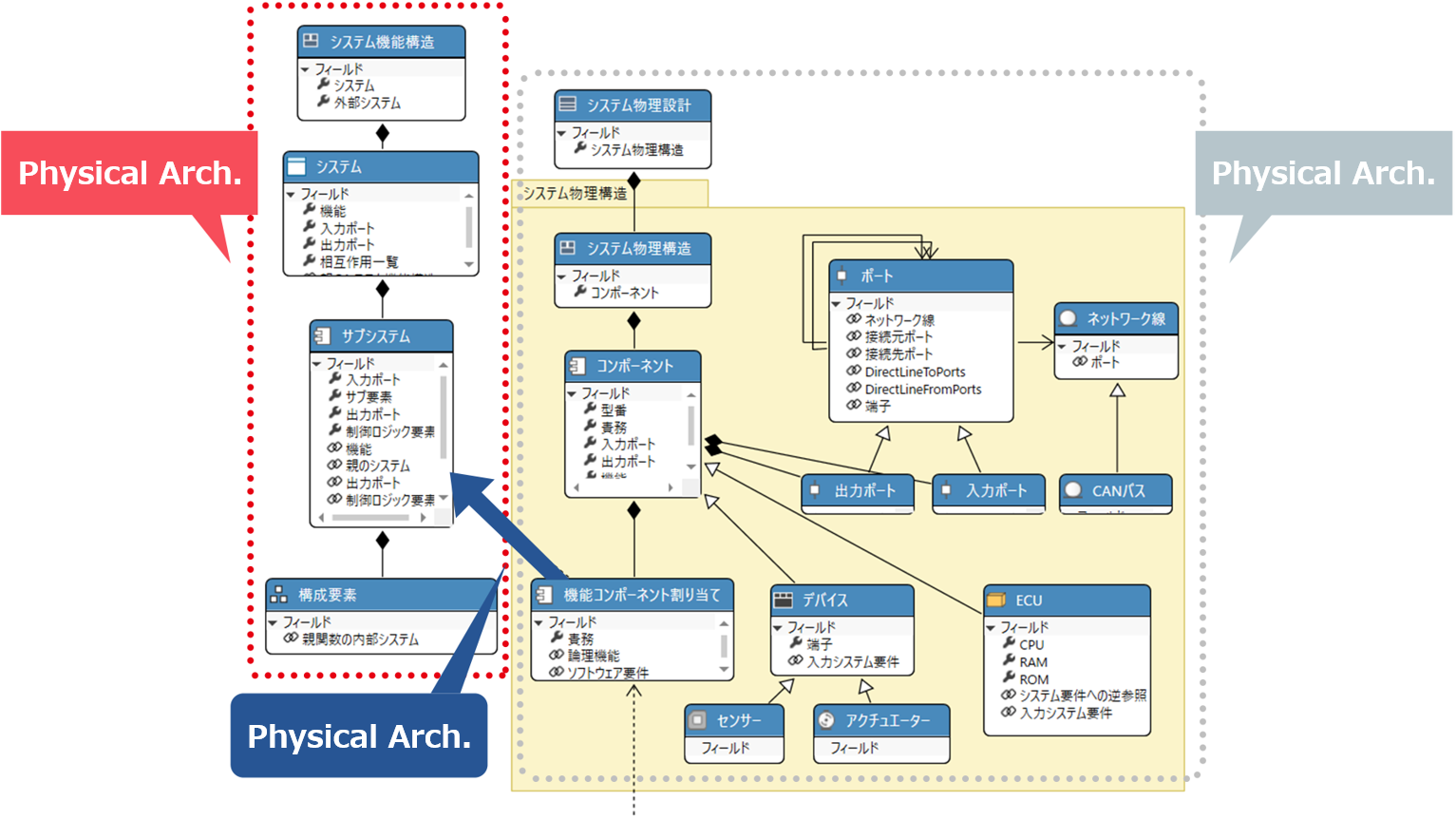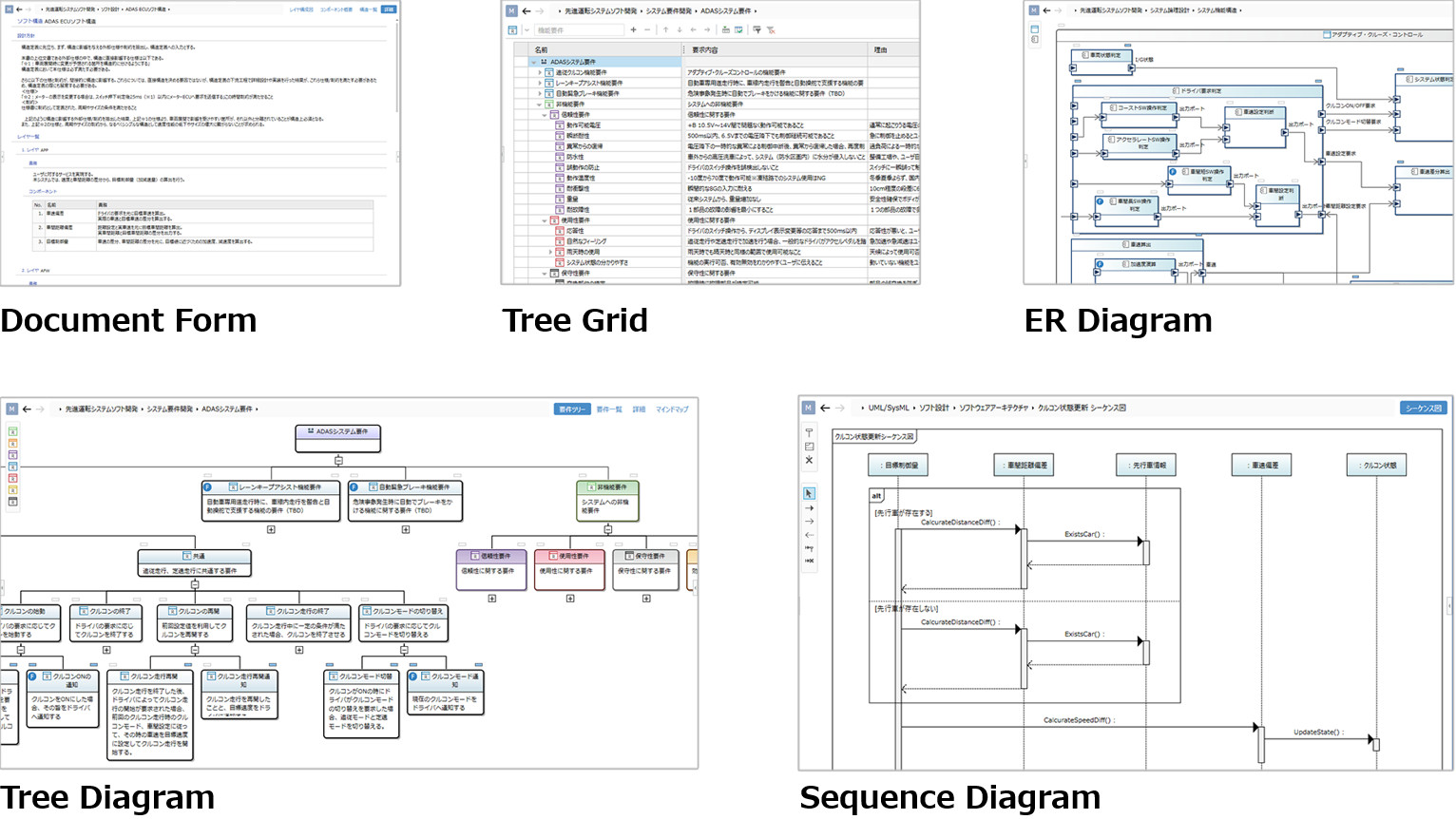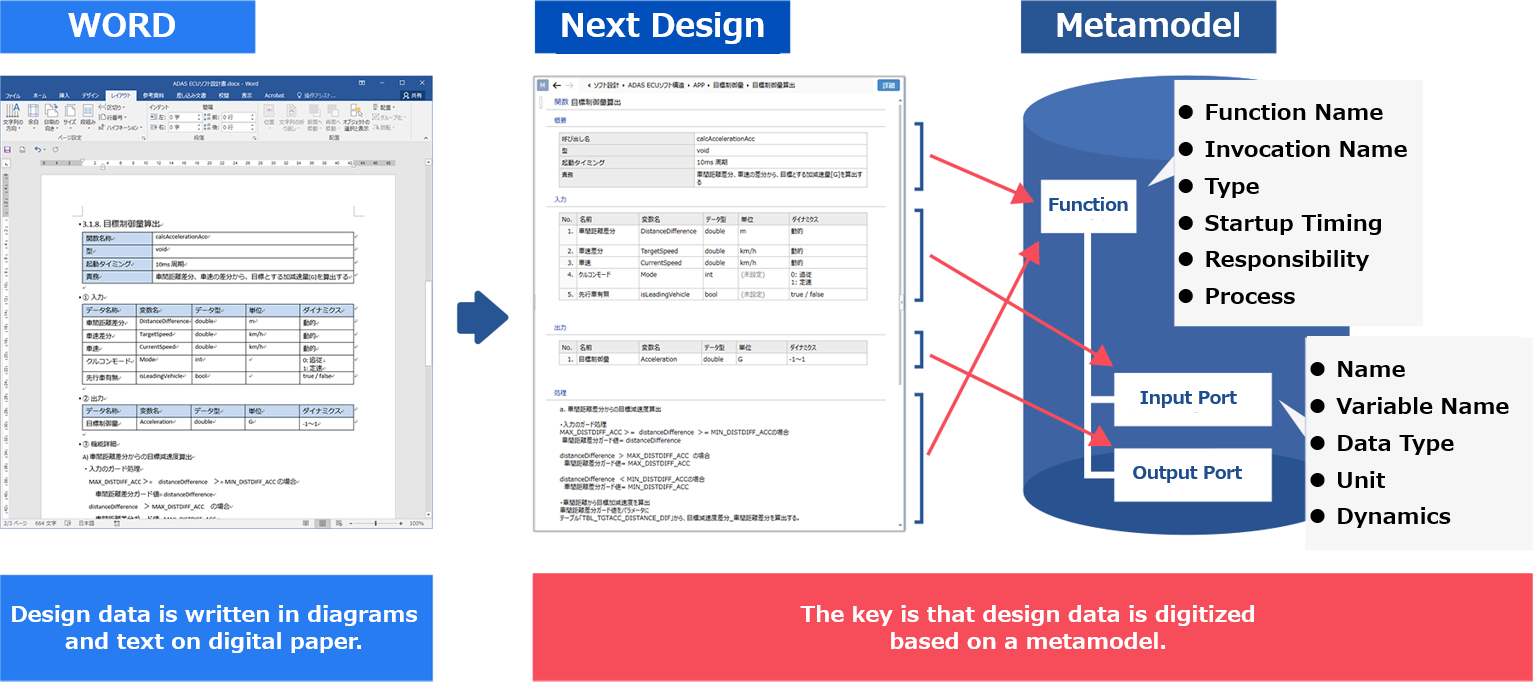In the system software development field, the design products of each process are often distributed in Word/Excel, UML tools, etc., which is a hotbed of many manual operations and inconsistencies. Next Design can be customised as a design tool for the development site by defining a "metamodel" that organises the information structure and relationships of the development design deliverables, and a "view" that is a graphical and written representation of the metamodel.
The definition of metamodels and views is completed in the tool's UI, so that you can get a design tool specifically tailored to your design methodology, without programming. This customisation can be carried out as a pre-engineering preparation by a senior designer or by a person in a process improvement role, who will then use the customised Next Design to carry out the design.
This high degree of customisability means that the tools can be adapted to the design deliverables and processes of the development site, so that you get a dedicated design tool that is non-programmable and aligned with the design methodology of each development site.

-
Meta-model to define the features and strengths of each development site
A meta-model is a model of the structure and relationships of requirements and design information. It embodies the results and strengths of improvements made in the past, as well as the architecture and design details that vary from product to product.
The definition of a metamodel in Next Design is a way of organising and visualising the design process in development.
-
Views allow you to define the look and feel of your design outcomes
Once the metamodel has been defined, it can be defined in terms of views, which are the way in which design information is presented. There are diagrams for a bird's eye view, document representations for entering detailed design information, and data grids for listing large amounts of data in large systems, all of which can be freely customised.
You can use standard notations such as UML/SysML as well as your own description expressions.
-
There is no paradigm shift. We respect the methods of the field.
THE VIEW IS THE UI FOR EDITING THE DEFINITION OF THE METAMODEL. IT ALLOWS THE DESIGNER TO "DESIGN ACCORDING TO THE METAMODEL" IN A NATURAL WAY, AS THE FAMILIAR TERMINOLOGY, DOCUMENT STRUCTURE AND GRAPHICAL REPRESENTATION CAN BE RETAINED.
Next Design has been adapted to the development environment, so the design methodology remains unchanged. You don't need to be a modelling expert to edit in the familiar way you have always used the design process.





